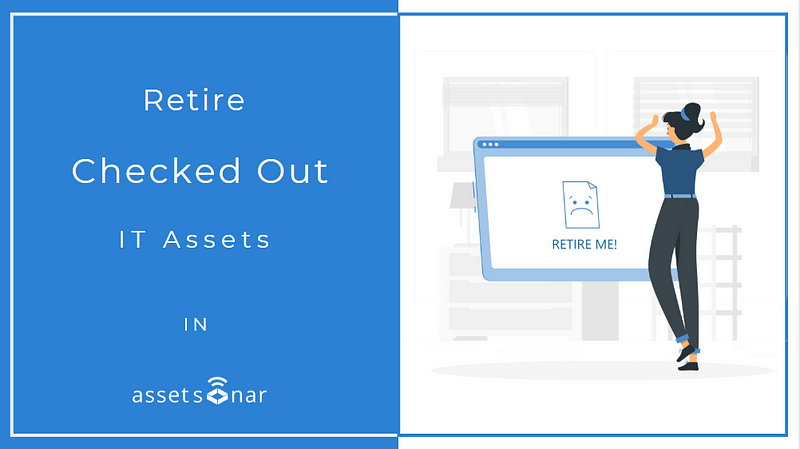Whether you are a large or small business, you understand the risk of losing IT Assets in the workplace during routine tasks. While this is not uncommon, it can lead to data discrepancies if not accounted for correctly. Many companies struggle with reporting these incidents accurately in their systems. Now AssetSonar provides a robust solution.
With a single click, you can simply retire an Asset that has been misplaced or lost. Not just this, you can also activate it once it has been recovered. This feature helps streamline checkout and check-in procedures while maintaining an accurate database.
1. Enable Company Settings
In order to enable the feature, go to Settings → Company Settings → Retire Checked Out Items → Update.

Note: Retire Checked Out Items feature is only applicable to Assets currently.
Once you have enabled the setting, scroll up, and click update.
2. Retire Individually Checked Out IT Assets
To retire a checked out IT Asset, go to the Asset Details page and click on Retire.
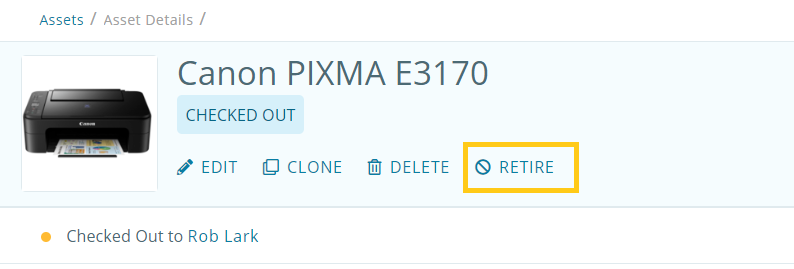
Next, an overlay will appear asking you to state the reason for retirement.

After you retire the Checked Out IT Asset, you can view it under the ‘Retired’ filter on the main Assets page.
After selecting the ‘Retired’ option, you will be prompted to choose the reason for retirement.
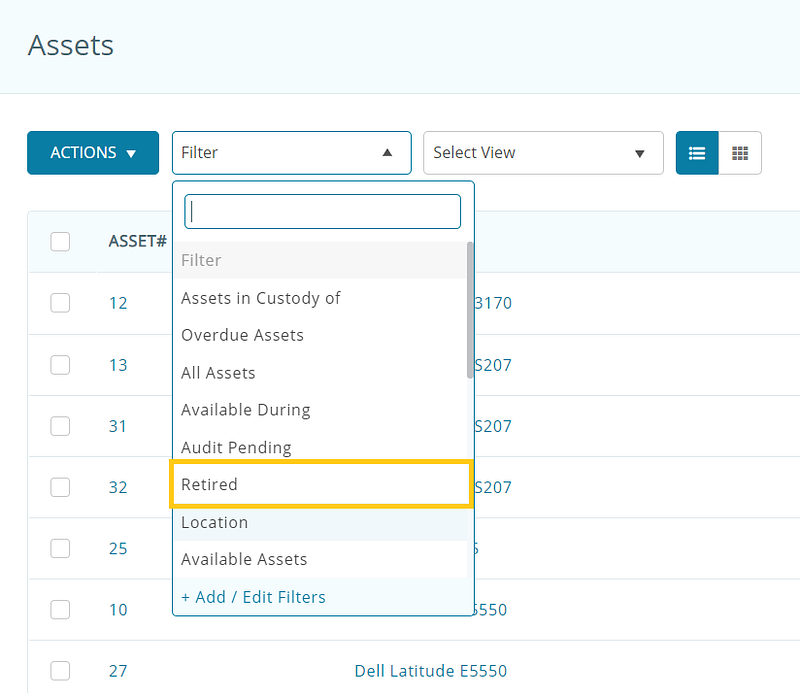
2.1. Edit Retirement Reason
You can also create or change retirement reasons as per requirement. Go to Settings → Company Settings & Addons → Retirement Reasons.
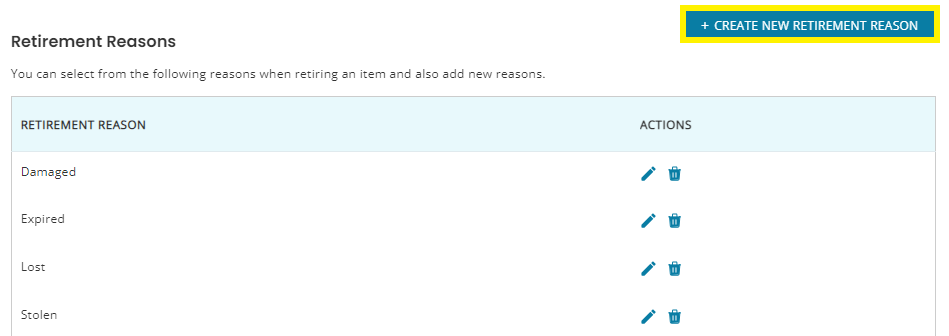
An overlay will appear when clicking on ‘Create New Retirement Reason’. Add a reason for retirement and choose to mark it as active. Click ‘Create’ when done.

To edit or delete previous retirement reasons, click on the edit or delete icon as shown below.

An overlay will appear to change the retirement reason. Let’s say a computer was retired because it was damaged. It was later informed that it was lost by a user. For this, you can edit the retirement reason to lost and click ‘Update’.
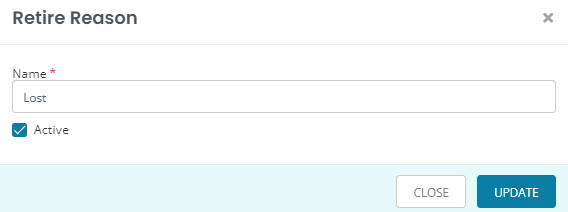
Note: Retire Reason is inactive if the Active box is unchecked. Inactive retirement reasons will not be visible when retiring items.
3. Retire Checked Out IT Assets from a Cart
Similar to individual Asset retirement, you can also retire checked out IT Assets from a Cart. Go to the Cart which contains the Asset you want to retire. Select the Asset you want to retire.

Go to the Asset Details page and click ‘Retire’. After this, your Cart will be updated as below:

Note: Checkout Date needs to precede the Retirement Date to retire Assets in the Checked Out state.
4. Reactivate an IT Asset
In case a lost IT Asset is recovered, you can simply activate that Asset.
Note: Reactivated Assets will be marked as Available and will not return to their prior Checked Out state.

5. Mark Retired assets active
In case previously retired assets in AssetSonar are discovered again through Kandji sync, AssetSonar makes those devices available again. Go to Company settings & Add Ons →ITAM Discovery Agent and check the box for ‘Make Retired Devices Available if Discovered Again’ setting to enable this option as shown below:
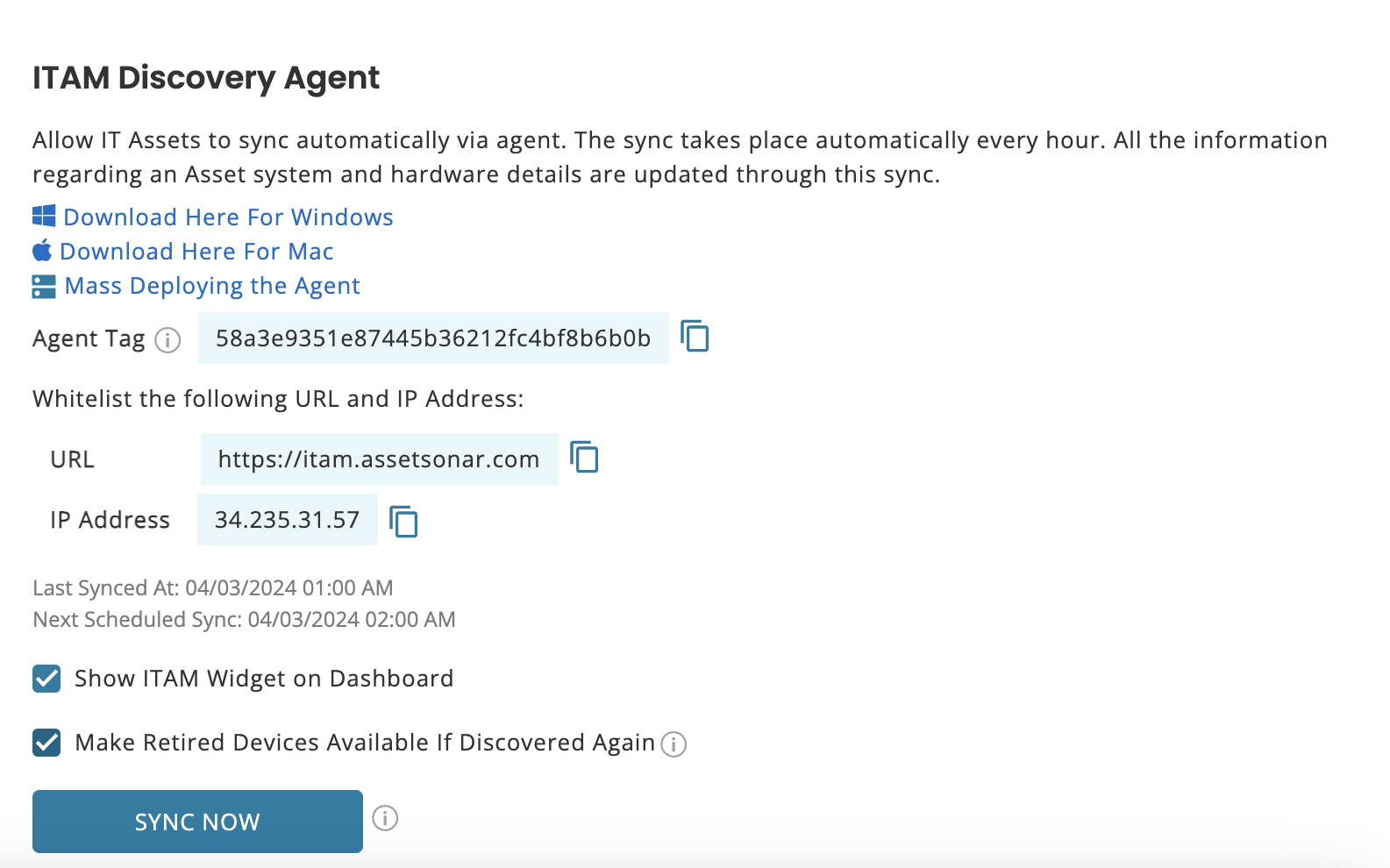
Please note this setting is also available for Kandji, Jamf, Microsoft Intune, and Cisco Meraki integrations.
6. Create Custom Reports for Retired IT Assets
You can also generate useful reports showing IT Asset retirement and their subsequent reasons. Go to More → Reports → Create a Custom Report. Specify the ‘Asset’ module and select Retirement.

Next, choose the relevant columns for your report. The Retirement section shows ‘Last Active State’, ‘Action Taken’, Date of Activation/Retirement’, and ‘Custodian First/Last Name’.

Once you run the report, this what the report looks like for retired IT Assets

The column ‘Last Active State’ tells whether the Asset was Available or Checked Out when it was retired. This can be used to differentiate between lost and obsolete Assets.
7. Set Up Alerts for Retired/Activated IT Assets
Turn on alerts for every time an IT Asset is retired/activated. Go to More → Alerts → Alert Types.

8. Retiring Assets based on their Age
Once you have entered the Purchase Date of an Asset in AssetSonar, the system keeps an updated record of its age. You can view it from the Asset Details page as follows:
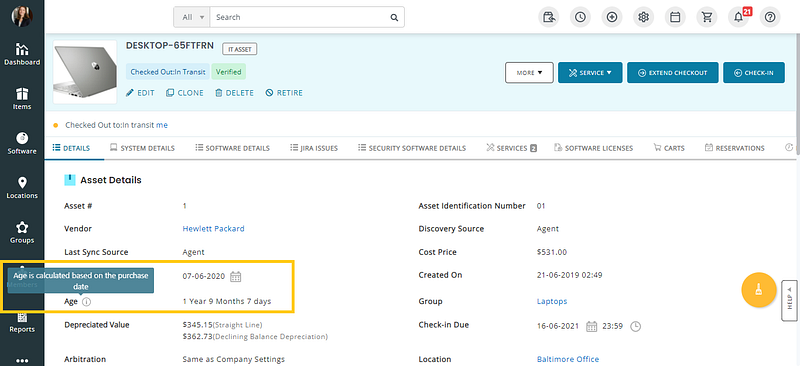
Age of Assets enables you to single out items that are nearing the end of their useful lives so you can retire them in a timely manner. Let’s say, as an IT Admin, you want to retire all the laptops that are older than 2 years and 11 months (i.e. 1060 days).
You can do so by running a Custom Report and filtering laptops by their Age as illustrated.
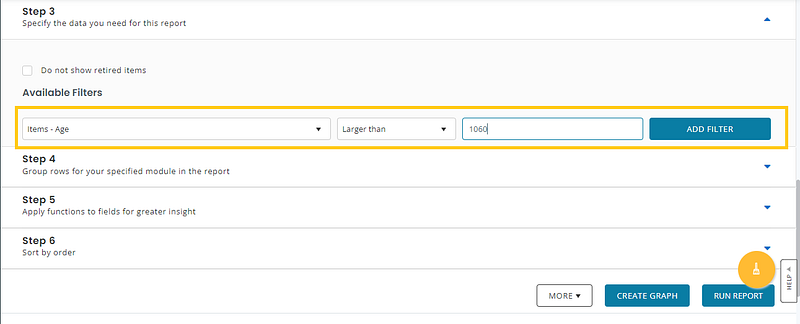
Now that you have the list of IT Assets that are older than 2 years and 11 months, you can retire them from the Asset Details page.
Read more: Generating Custom Reports in AssetSonar


